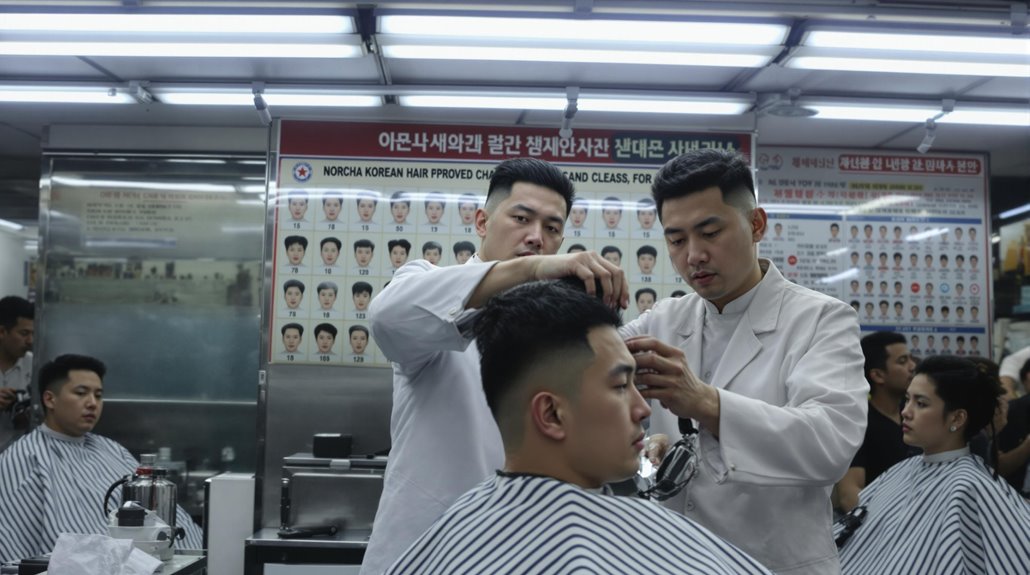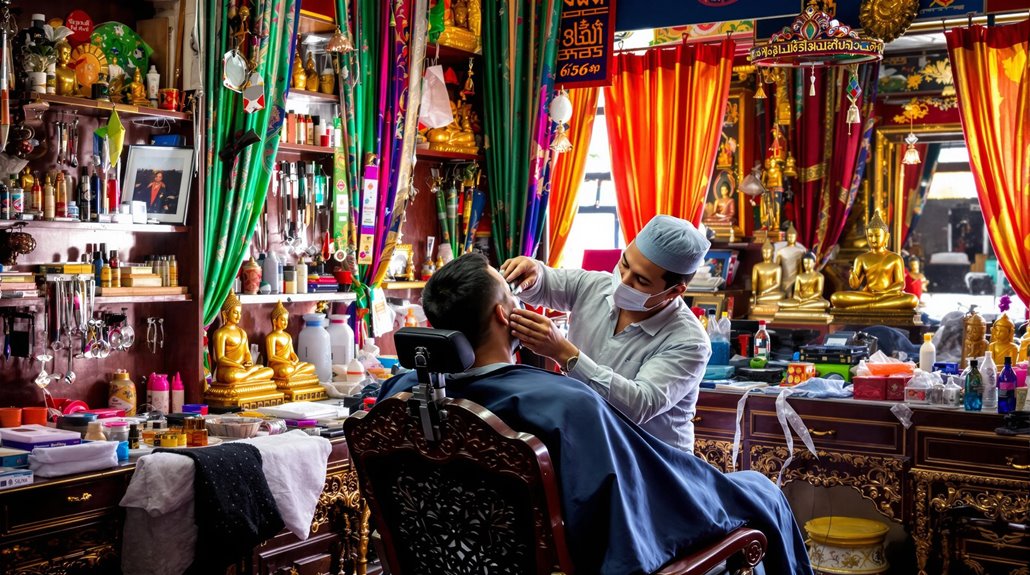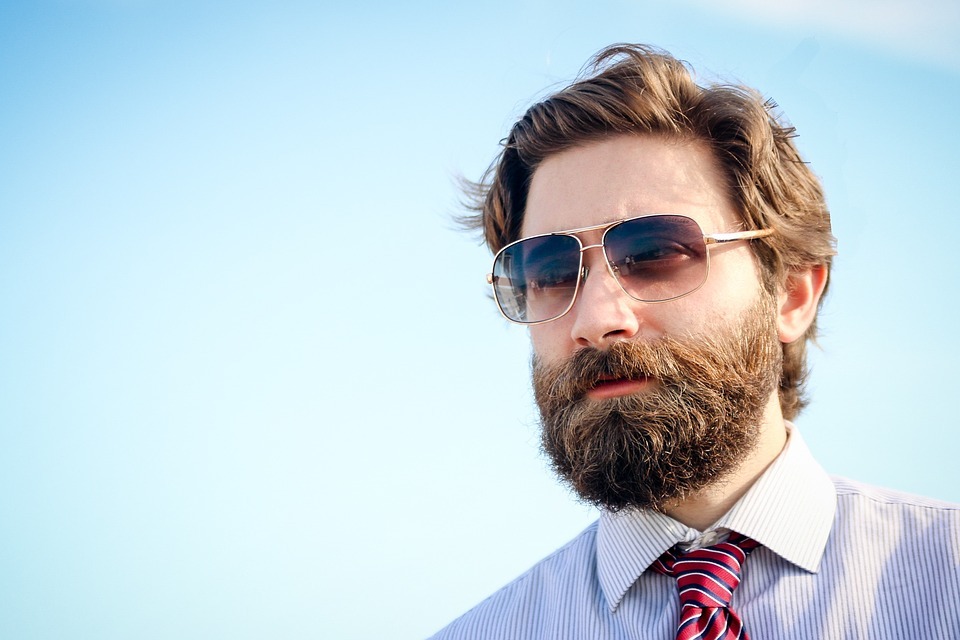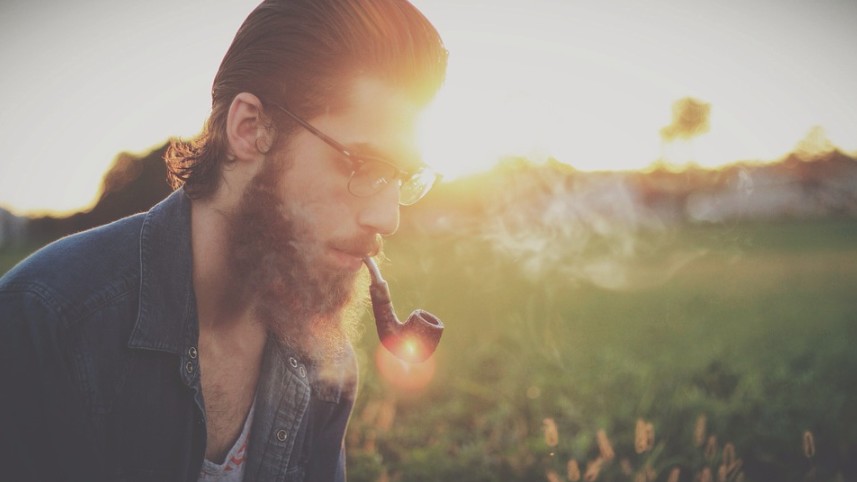In Which Country Is a Beard Not Allowed?

In Tajikistan, men under 60 can't have a beard because the government links facial hair to radicalism. This leads to strict police enforcement and reported incidents of forced shaving. Likewise, in Iran, certain beard styles are regulated, reflecting adherence to traditional Islamic values. North Korea has specific approved hairstyles, with a strong emphasis on conformity. In India, while Sikh servicemen can grow beards, non-Sikh and non-Muslim military personnel generally cannot. Thailand's grooming standards focus on discipline, with strict regulations for military and police. If you're curious about other countries with beard-related rules, there's more interesting information to investigate.
Beard Restrictions in Tajikistan
In Tajikistan, the government's policies against beards are part of a broader effort to counteract radicalism by associating facial hair with extremist ideologies. If you're a man under 60, you must be clean-shaven for passport applications. The only exception is for those over 60, who can have beards in official documents. These grooming regulations are strictly enforced by the police. There have been reports of officers forcibly shaving men with beards, highlighting the government's commitment to these measures.
This focus on clean-shaven appearances creates significant cultural tension, especially among Muslim men. Many feel pressured to adhere to these government policies even when it conflicts with their religious practices, such as preparing for a pilgrimage. The enforcement of these grooming regulations is not just a personal inconvenience; it has broader social implications. For instance, the departure of a star soccer player from Tajikistan due to these oppressive regulations underscores the personal and cultural impact.
As you navigate through Tajikistan's policies, understanding this interplay between government regulation and cultural identity is vital. It's a delicate balance that affects daily life and personal freedoms in profound ways.
Iran's Grooming Regulations
Ever wonder how a country's grooming regulations can reflect deeper societal values? In Iran, hair isn't just about style—it's a statement. The government enforces grooming regulations that ban "un-Islamic hairstyles," like mullets and ponytails, aiming to safeguard cultural integrity and counteract cultural imperialism. These regulations are more than just rules; they're a reflection of Iran's commitment to traditional Islamic values.
Barbershops in Iran aren't just places for a trim. They're on the front lines of a cultural debate. If a barbershop doesn't follow the government's hairstyle guidelines, it risks closure. These guidelines dictate what hairstyles are acceptable for men, blending state control with cultural expectations. The Iranian government believes that upholding these standards helps preserve the nation's cultural identity.
However, these grooming regulations often spark debates about personal expression versus state control. While some see them as essential for maintaining cultural integrity, others argue they stifle individuality. In Iran, your hairstyle isn't just a personal choice—it's intertwined with broader societal norms and values. As you navigate the streets of Tehran, bear in mind that hair is more than just a fashion statement—it's a reflection of a deeper cultural dialogue.
North Korean Hair Policies

Uniformity often takes center stage in North Korean hair policies, where the government wields significant influence over grooming choices. You're likely aware that North Korea has a recommended list of hairstyles designed for both men and women—10 options for men and 18 for women. This list reflects the North Korean government's preferences for personal appearance, aligning with broader ideological goals. Notably, male students are often encouraged to mimic Kim Jong-un's hairstyle, underscoring the government's role in setting grooming standards.
While there are rumors that strict hairstyle regulations are enforced, the reality can be more nuanced. Experts suggest that there is some personal expression allowed, despite the official guidelines. For instance, the use of hair dye might be permitted, showing a subtle flexibility within the system. However, the regulations surrounding beards remain unclear, though they're likely influenced by similar standards of uniformity.
Enforcement of these grooming standards can vary, leading to mixed reports about their strictness. Nevertheless, the emphasis remains on creating a cohesive public appearance that aligns with the state's ideological objectives, even if some personal expression occasionally surfaces.
India's Military Facial Hair Rules
Moving from North Korea's strict grooming policies to those of India's military offers a fascinating contrast in how different cultures handle personal expression. In the Indian Army, the grooming policy generally prohibits beards for non-Sikh and non-Muslim personnel, maintaining uniformity across the ranks. However, Sikh servicemen are permitted to keep full beards, provided they adhere to specific grooming regulations. This allowance respects their religious identity and distinguishes them within the armed forces.
In 2003, a significant Supreme Court ruling permitted Muslim personnel to grow beards, acknowledging their religious practices. This adaptation within the military framework illustrates India's commitment to religious accommodation. Meanwhile, special forces units may grant exceptions for beards to non-Sikh and non-Muslim members when operational requirements demand it, highlighting the flexibility within the rules for tactical reasons.
The primary focus of the Indian Army's facial hair regulations is on hygiene and safety during combat situations. By restricting facial hair for the majority of soldiers, the army guarantees that gear fits properly and hygiene standards are maintained, essential for effective performance in the field. This careful balance between uniformity, religious expression, and operational efficiency defines India's military grooming policies.
Thailand's Grooming Standards

Grooming standards in Thailand reflect a cultural emphasis on discipline and uniformity, particularly within the military and police forces. If you're part of Thailand's military personnel or a police officer, you're expected to adhere to strict grooming regulations. The 904 cut, a specific hairstyle for men, requires shaving the sides and back while keeping minimal hair on top. This style signifies the expectation of uniformity and discipline within these roles.
For women in the military, maintaining hair in a bun with designated ribbon colors is mandatory. These grooming standards aren't just limited to the military; they extend to educational institutions as well. School dress codes enforce specific hairstyles, such as crew cuts for boys and earlobe-length hair for girls, further emphasizing societal expectations of conformity. Teachers have the authority to guarantee students comply, sometimes leading to arbitrary enforcement and disciplinary actions for perceived violations.
While beards aren't explicitly banned, the emphasis on uniformity and clean-cut appearances suggests they're discouraged, especially in formal roles. Altogether, these grooming standards in Thailand reflect broader societal values of order and discipline, manifesting in both professional and educational settings.
Historical Beard Bans
Throughout history, many societies have imposed strict regulations on personal grooming, with beards often becoming a focal point of such mandates. These historical beard bans reflect shifts in societal views, government campaigns, and efforts to control individual expression. Here are four notable instances:
- Tajikistan: To combat radicalism, the government enforces a clean-shaven requirement, particularly for passport applications. Reports suggest police may resort to forced shaving, viewing beards as a threat to national security.
- Russia: Under the rule of Peter the Great in 1698, a beard tax was introduced. Men had to pay a fee to keep their beards; refusal led to forced shaving. This tax was part of broader grooming laws to modernize Russian society.
- Albania: During Enver Hoxha's regime, men faced bans on hair longer than 4 cm and were prohibited from growing beards, suppressing individual expression. Such grooming laws aimed to guarantee conformity and control.
- Iran: Government campaigns against "un-Islamic" hairstyles dictate grooming standards, restricting beard growth in public. Specific styles are outright banned, reflecting a blend of cultural and political motives.
These historical examples highlight the intricate relationship between personal grooming and broader societal factors.




